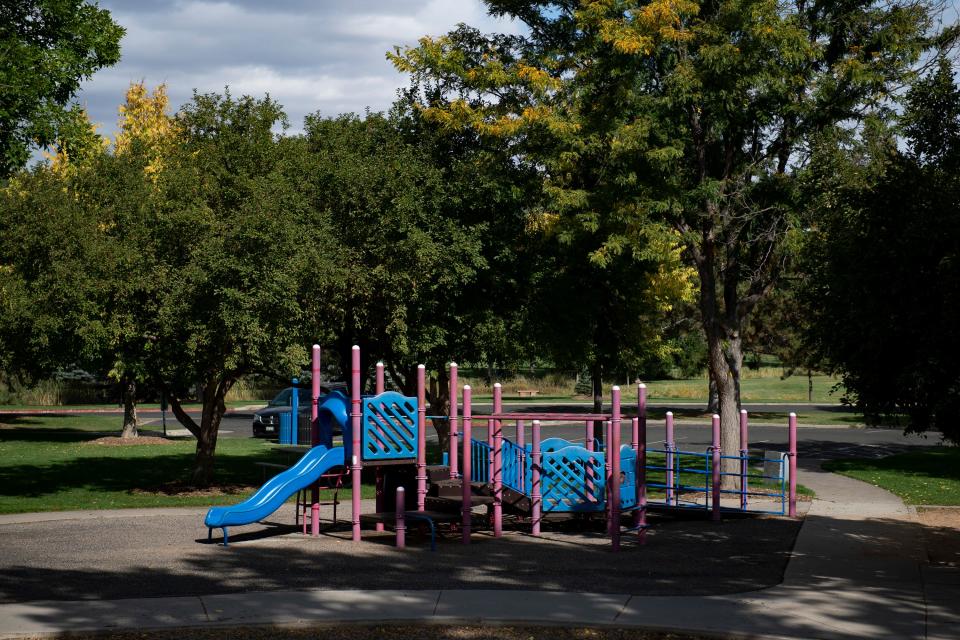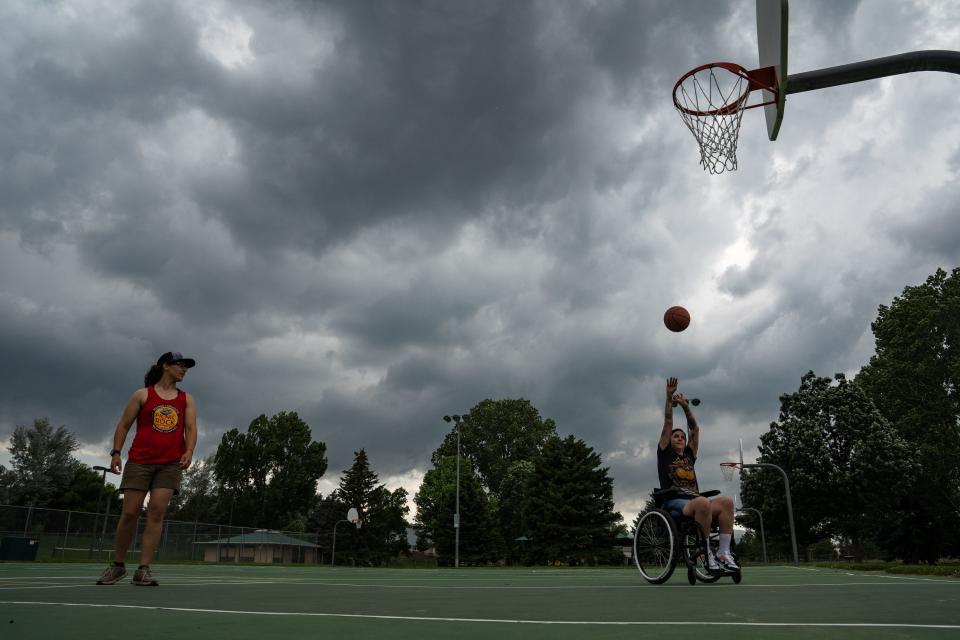A Fort Collins half-cent sales tax is on November ballots. We've broken down the city's ask
Fort Collins voters in November will consider Ballot Issue 2A, a sales tax increase to fund parks and recreation, greenhouse gas reductions and city transit.
It's one of two tax issues on the ballot, along with three charter amendments and four seats on City Council.
The ballot language is set and lays out the parameters for how much will be collected, the rate of taxation and what the money can be used for. But sometimes you just need more context.
Here, we're annotating the ballot language to offer a deeper explanation of what's proposed and more context on what it means.
Click on the hyperlinks in the ballot language below to get the details.
Ballot Issue 2A
Shall City of Fort Collins taxes be increased by $23,800,000 in the first full fiscal year (2024), and by such amounts collected annually thereafter, from a .50% sales and use tax beginning January 1, 2024, and ending at midnight on December 31, 2050, with the tax revenues spent only for the following:
25% for the City’s transit system, including, without limitation, infrastructure improvements, purchase of equipment, and upgraded and expanded services;
and while City Council may exercise its discretion in deciding the timing of spending for each category, that spending shall supplement and not replace the current city funding for the specified purposes and shall be reconciled to the stated percentages by the end of 2030, 2040, and when the last revenues collected from the tax are spent, but this tax shall not apply to:
Items exempt under the City Code from City sales and use tax;
Food for home consumption; and
Manufacturing equipment, but for the use tax only;
And with all the tax revenues, and investment earnings thereon, to be collected, retained, and spent as a voter-approved revenue change notwithstanding the spending and revenue limitations of Article X, Section 20 of the Colorado Constitution?

Shall taxes be increased by $23,800,000?
Colorado's Taxpayers' Bill of Rights requires tax questions to state how much is expected to be collected from a proposed tax increase in its first year. Anything collected above that amount in the first year could trigger a TABOR refund, so this amount is a high estimate.
But wait? Didn't Fort Collins "de-Bruce?" (That's a reference to the creator of TABOR, Doug Bruce, and it means that there has been a vote of the people to disregard TABOR's revenue caps and allow all money collected to be used instead of refunded.)
Yes, Fort Collins has "de-Bruced," but city of Fort Collins' Chief Financial Officer Travis Storin and City Attorney Carrie Daggett told Fort Collins City Council at a Aug. 14 work session that guidance from state TABOR experts is to use a high estimate because of legal questions around obligations to hit that first-year estimate only.
Back to $23.8 million. If the tax collected its maximum amount, the money would be split three ways:
Parks and recreation: $11.9 million in the first year
Air pollution and greenhouse gas reduction: $5.95 million
City transit: $5.95 million
For comparison sake, here's how much is currently budgeted for each area in 2024:
Parks and recreation: $22.7 million, with $946,000 currently going to management of assets
Air pollution and greenhouse gas reduction: $8.5 million
City transit: $21.37 million, with about $5 million coming from state and federal funding
And another comparison: This tax could increase the city's total budget in year one by 2.9%. The 2024 budget is $827 million.
.50% sales and use tax
This is a half a percent sales tax, or a half-cent sales tax.
How much is that? That amounts to 5 cents on a $10 purchase, 50 cents on a $100 purchase or $5 on a $1,000 purchase. If a person purchased $12,400 of fully taxable items annually, it would amount to $62 per person. If a household purchased $31,200 worth of items, it would cost $156. Those amounts are the expected impact on residents, according to a city analysis in documents presented to council.
How much of a percent increase is this? The current sales tax in Fort Collins is 3.85%. This ballot measure would make it 4.35%, an increase of 13%. When you add it to the county sales tax (0.8%) and the state sales tax (2.9%), the total would be 8.05%, up from 7.55%. That's an increase of 6.6%.
Who pays sales tax? Anybody who shops in Fort Collins. That means visitors purchasing items in Fort Collins would be helping to fund these initiatives.
Beginning Jan. 1, 2024, and ending Dec. 31, 2050
The tax duration will be 27 years.
Tax revenues spent only
The money can be spent only in the areas mentioned in the ballot language. In this case, it is for items falling under parks and recreation, greenhouse gas and air pollution reduction and expansion of city transit. Read on to get more details.

Parks and recreation facilities
While there are no specific projects mandated by the tax, it could fund things like:
Replacing play equipment
Repairing walkways/bringing them to ADA standards
Upgrading/replacing locker rooms and restrooms
Pedestrian bridge replacements, fencing repairs, water feature renovations, bike park renovations, pedestrian lighting replacement
Repaving parking lots
Roofing repairs/replacement, HVAC replacements and electrical upgrades including LED
Conversion of courts from asphalt to concrete
Irrigation system renovation
Replacing or constructing indoor or outdoor aquatics facilities
Greenhouse gas and air pollution reduction
The city has set goals of reaching 100% renewable electricity by 2030 and being carbon neutral by 2050. The city's Our Climate Future plan lays out strategies for that.
The ballot question doesn't mandate specific projects to be completed, but the money could fund efforts to:
Expand use of electric cars and fleets, including charging equipment and home electrical panel upgrades.
Improve building emissions, including expanding programs and incentives for electrification of space and water heating, use of battery storage, energy use disclosures and building performance standards.
Support active modes of transportation through e-bikes rebates, protected bike lines, grade-separated crossings and other crossing improvements.
Achieve zero waste through recycling education and removing barriers, increasing recycling services, improving infrastructure and growing the circular/sharing/reuse economy.
City transit system
This money is for items within the Transit Master Plan, specifically for mass transit. While there are no specific projects mandated for actual funding, in its needs assessment, the city said funding could go to:
Address bus operator resiliency
Keep fares free
Obtain additional buses
Increase frequency of routes
Add routes
Establish southeast micro-transit service
Provide a local match for major capital projects, like West Elizabeth bus rapid trans, a north transit maintenance facility, a North College MAX extension and mobility hubs
City Council may exercise discretion in timing
As an example, if council wanted to approve parks and recreation spending that exceeds 50% of the tax's revenues in 2025, that's OK so long as they make up for it later and the percentages match the ballot language at 2030, 2040 and at the end of the tax.
Spending shall supplement and not replace
Council's resolution adopting the ballot language says the revenue coming from the tax is intended to supplement the amounts the city currently spends in these areas, not replace it, so that overall funding increases and addresses the shortfalls.
Shall be reconciled to stated percentages
This requirement means that at three different times, in 2030, 2040 and after the tax ends, the city must look back to make sure 50% of the revenues have gone to parks/recreation and 25% have gone to the other two items.
This tax shall not apply to
What won't be subject to this tax? Most food items purchased in a grocery store and menstrual products. However, here are examples of items purchased in a grocery store that would be subject to the tax: alcoholic beverages, pet food, vitamins and supplements, and health aids.
The spending and revenue limitations
This is asking voters whether the city can keep any additional revenues collected above caps set by TABOR in subsequent years of the tax, eliminating any potential for refunds.
Editor’s note: This story has corrections. Fort Collins Ballot Issue No. 1 is Ballot Issue 2A on the county ballot. The proposed sales tax increase amounts to a 13% increase in city sales tax and a 6.6% increase in city, state and county sales taxes.
This article originally appeared on Fort Collins Coloradoan: Fort Collins election 2023: What is Ballot Issue 2A?

